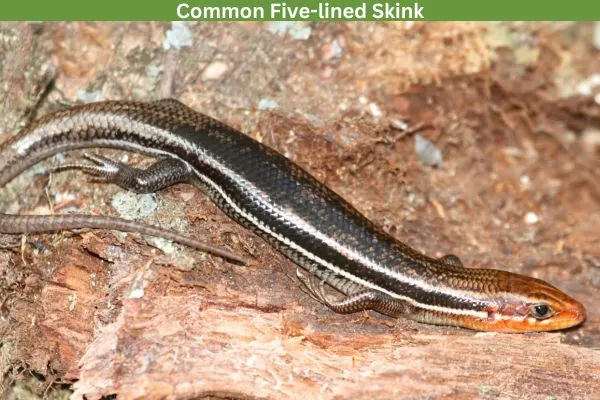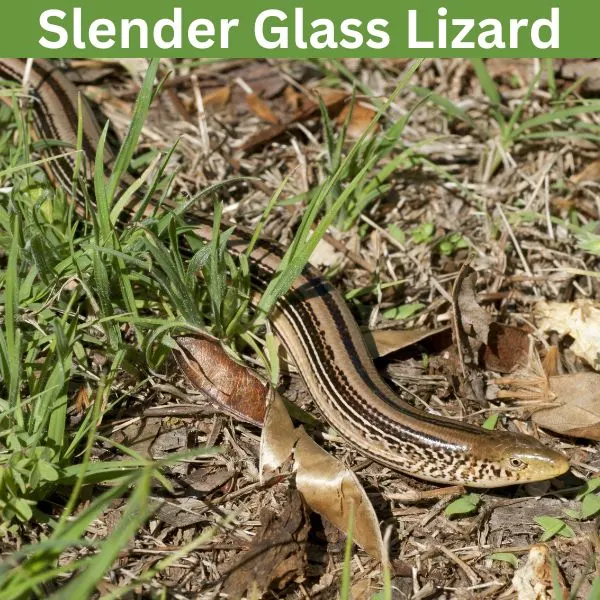Wisconsin has 4 lizard species that live in the state, which are just a few of the many animals in the region. Overall you can find around 37 different reptile species, and 19 amphibians in Wisconsin. Lizards are a very important animal in Wisconsin, and are a part of a larger ecosystem.
Lizards are important since they are used for food by animals like predatory birds, other reptiles, and carnivorous mammals. Lizards can be very similar with one another, and you can tell species apart by examining their appearance, behavior, and the habitats they live in.
Let’s take a look at the 4 lizard species that live in Wisconsin, and go over everything you should know about them. Lizards are one of the most diverse groups of reptiles, and there are around 7,000 species you can find around the globe.
Table of Contents
Lizards in Wisconsin
Teiidae
1. Six-lined Racerunner

- Experience Level: Intermediate
- Family: Teiidae
- Scientific Name: Aspidoscelis sexlineata
- Other Names: Sandlapper lizard
- Adult Size: 6 to 9.5 in. (15 to 24 cm.)
- Lifespan: 4 to 5 years
- Average Price Range: $30
The six-lined racerunner is common in the south central and eastern states in the U.S. In Wisconsin this species is relatively uncommon but can be found in the southwestern edge of the state. They are mostly found in dry prairies with loose sandy soil where they can make their burrows.
Six-lined racerunners are typically black, dark brown, or dark green in color. Like the name suggests they have six bright yellow or green stripes running down their back. Males have blue or grayish blue colored chests with abdominal stripes while females usually have white underbellies that may have a very slight bluish hue.
The diet of six-lined racerunners is made up of insects, mainly termites and various flying insects. These lizards live up to their name and are very fast runners. Their long slender bodies allow them to run swiftly and some can run up to 18mph. They rely on their speed to outrun predators and catch their food.
Scincidae
2. Common Five-lined Skink

- Experience Level: Intermediate
- Family: Scincidae
- Scientific Name: Plestiodon fasciatus
- Other Names: American
- Adult Size: 4.9 to 8.5 in. (12.5 to 21.5 cm)
- Lifespan: 6 years
- Average Price Range: $12
Common five-lined skinks are found in woodland, and moist forest habitats. This lizard is native to the eastern United States. In Wisconsin this species can be found in the central, and northwestern portions of the state. Common five-lined skinks are active in the day, but when not active may hide under debris, or vegetation.
This lizard gets its name from the five lines that run down their back from their head to their tail. Medium in size, this species has a smooth, and shiny appearance. They have slender bodies with black, tan, or grayish coloring. The stripes that run down their body are white or yellow. When born this lizard has a bright blue tail, which may fade as they age.
Common five-lined skinks are active in the day, seen most from the months from spring to fall. These lizards feed on small insects, spiders, and other invertebrates. Their tails are able to drop and regrow, which can help them escape predators.
3. Northern Prairie Skink

- Experience Level: Intermediate
- Family: Scincidae
- Scientific Name: Plestiodon septentrionalis
- Other Names: n/a
- Adult Size: 5 to 9 in. (13 to 22 cm.)
- Lifespan: 10 years
- Average Price Range: n/a
Prairie skinks are found in open prairie, grasslands, and near sandy streams. This species is found most in northwestern Wisconsin. This lizard is native to the United States, and can be found in the central portion of the U.S. Prairie skinks are active most in the spring and summer. In the winter, or at night this species will take shelter in a burrow that it digs.
A small lizard, prairie skinks have tan, to brown coloring. This lizard has dark stripes running down their body and sides. They have a slender appearance, with smooth scales. When born this species has a blue tail, which leaves as they mature.
Spiders, crickets, and other invertebrates is what this lizard eats, and they typically avoid preying on ants. In the spring this lizard mates, and they lay their eggs in the summer, which hatch in early fall. Water sources are often near where this species lives, and during the day you may see them basking in the sun.
Anguidae
4. Slender Glass Lizard

- Experience Level: Intermediate
- Family: Anguidae
- Scientific Name: Ophisaurus attenuatus
- Other Names: n/a
- Adult Size: 22 to 46 in. (55.88 to 116.84 cm.)
- Lifespan: 10 to 30 years
- Average Price Range: $50
Slender glass lizards are a secretive species, found across the eastern United States. Sandy and coastal plain regions are where this lizard lives. They are often found in places like old fields, and sandhills. This lizard is active in the spring to fall, and is a burrowing lizard when not active.
In Wisconsin this lizard is very rare, and is considered threatened due to habitat loss making their population decline. In the state, slender glass lizards have only been reported in a few counties like Green Lake, Adams, Juneau, Colombia, Sauk, LaCrosse, Waushara, and Marquette.
Slender glass lizards are the largest lizards that live in Wisconsin, and they are identifiable by their long snake-like bodies. This lizard has a tan to olive coloring, with dark stripes running down their back, and a smooth appearance. While they look like snakes, glass lizards have blinkable eyelids, and ear holes.
Glass lizards are also able to drop their tail, which can help them escape predators like birds, carnivorous mammals, and large snakes. Slender glass lizards are not able to open their jaws wide like a snake, and feed on things like small rodents, insects, other lizards, and spiders.
FAQ
What is the fastest lizard in Wisconsin?
The six-lined racerunner is the fastest lizard that lives in Wisconsin. This species is able to reach up to 18 mph (28.9 kph.), and use their speed to catch prey, and escape predators.
In Wisconsin what is the largest lizard?
The slender glass lizard is the largest lizard that lives in Wisconsin, and this species is able to grow up to 46 in. (116 cm.) in length. Slender glass lizards do not look like other lizard species, as they have slender bodies, with no legs, often confused with snakes.
Are there any dangerous lizards in Wisconsin?
The gila monster is the only lizard species that is venomous in the United States, but this lizard is not found in Wisconsin. There are no lizards in Wisconsin that are dangerous, and while some may bite if provoked lizards are typically harmless, and will flee if approached.
Wrapping up
There are four lizards in Wisconsin, with each of them being very important animals in the habitats they live in. Woodlands, prairies, and wetlands are the habitats that you may find in Wisconsin, and lizards can be found in these, as well as urban, and suburban areas. Protecting the habitats that lizards live in are essential, and can also preserve the life of the other animals that coexist with lizards.
Some lizards can be kept as pets, and all you need is the right terrarium, food, and climate control items to keep your reptile healthy. Some lizards require intensive care, while others are easier to maintain. Researching the species of lizards you may want to get as a pet is best so you can give your lizard a healthy life if you plan on getting one.
While there are few lizard species in Wisconsin, there are still lots to discover about them. Knowing where and when to look can make it much easier to find lizards in the wild. When you know what lizards there are near you, and their interesting traits it is also easier to identify the species you may come across.
Lizards in other nearby states
